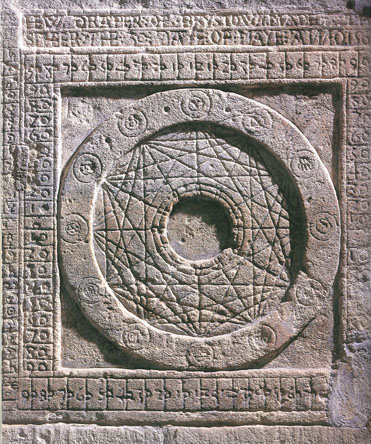Neal Stephenson’s Baroque Cycle is about the era of Newton, Samuel Pepys and the foundation of the Royal Society: it’s the transition period where you’d stop using D&D to model contemporary scientific belief and start using d20 Modern. From the point of view of fantasy fans, periods like this are productive. As magic goes under the microscope, its formulae are recorded in lab notes.
Take this passage from Quicksilver, inspired by a real experiment conducted by the Royal Society:
Sir Robert Moray came to visit, and ground up a bit of the unicorn’s horn to make a powder, which he sprinkled in a ring, and placed a spider in the center of the ring. But the spider kept escaping. Moray pronounced the horn to be a fraud.
The description of this experiment, by which they prove that unicorn’s horn does not kill venomous beasts, raises some questions: where did they get the unicorn horn? Let’s put that aside. The D&D takeaway here is that, if magic does work, unicorn horns (and unicorns) should be very dangerous to venomous creatures. Let’s say that a touch from a unicorn horn forces a creature to make a save vs. its own poison or suffer its effects. A creature’s immunity to poison does not protect it against this effect. This is the sort of using-its-own-power-against-it magical judo you’d expect from a good-aligned creature like a unicorn.
Daniel… read the graffiti cut in the stone by prisoners of centuries past. Not your vulgar Newgate Prison graffiti–most of it was in Latin, big and solemn as gravestones, and there were astrological diagrams and runic incantations graven by imprisoned sorcerers.
One thing we know about the incantations of imprisoned sorcerers: none of them are Knock or Teleport. Here is one of the real Tower of London carvings, etched the sorcerer Hugh Draper in 1561:
It looks just like the kind of thing I doodle in meetings. In D&D terms, it actually looks less like a spell and more like a spellbook: something you’d carve once, and then consult while doing innumerable astrological readings.
The D&D inspiration I get from this carving: a spellbook is a collection of shortcuts and pre-computed values. A wizard can’t be permanently separated from his or her spellbook. Given enough time, the wizard can re-compute and re-draw the various calculations and diagrams necessary to cast spells, even with nothing to write with but a stone wall and a tiny piece of metal. I like to think that in 1562, after a year or so of turning his dungeon cell wall into a spellbook, Hugh Draper was able to memorize Teleport and get the hell out of the Tower.
Tags: everybook








